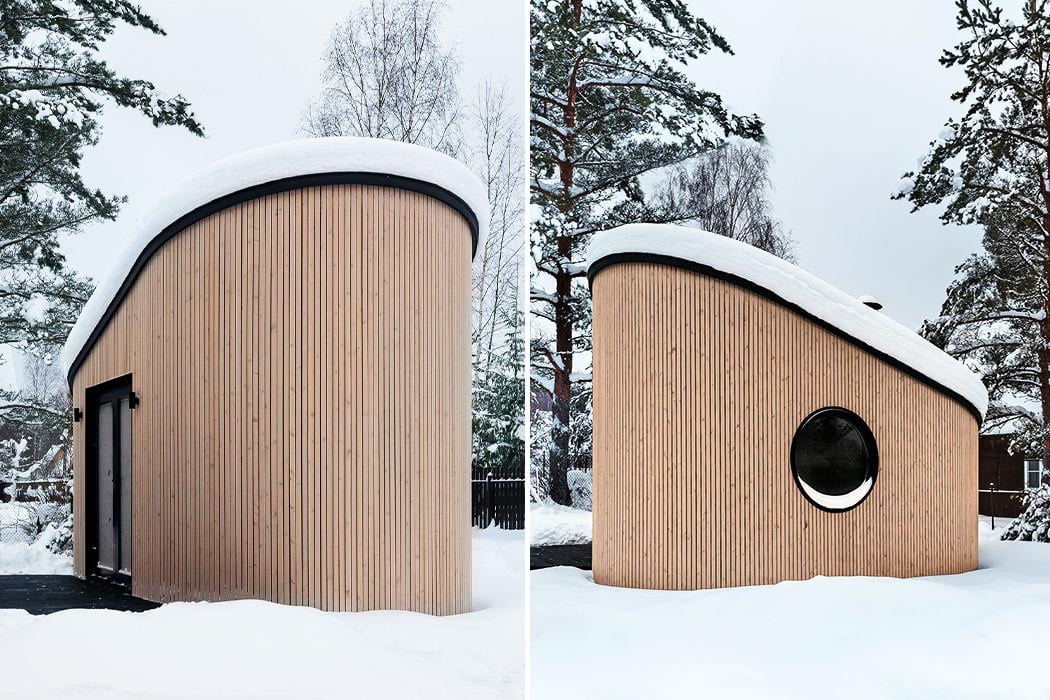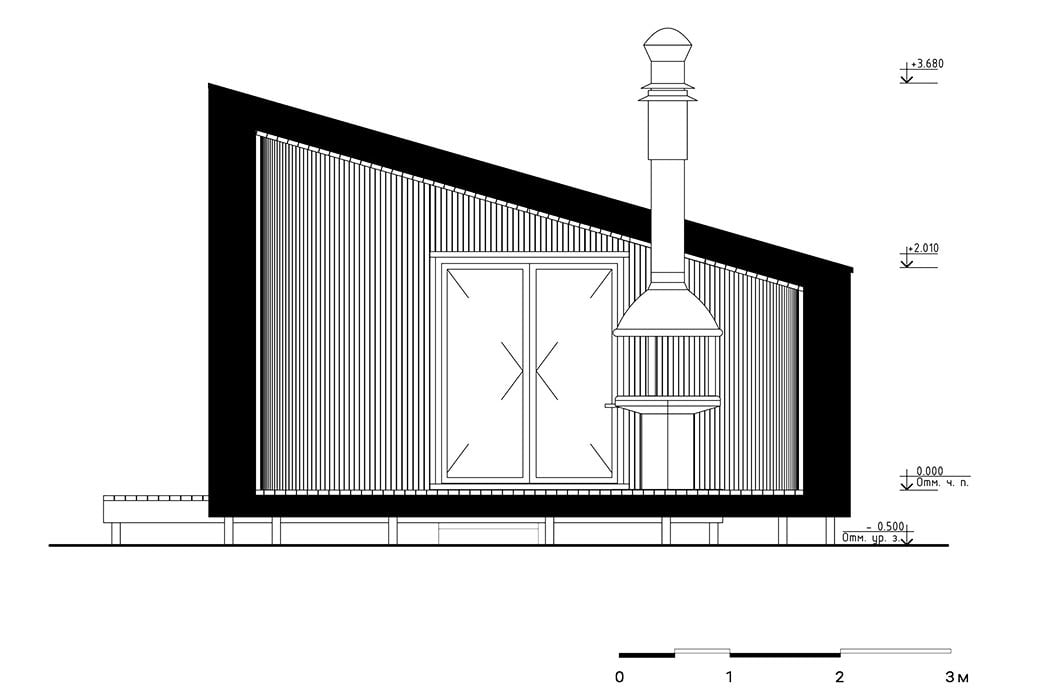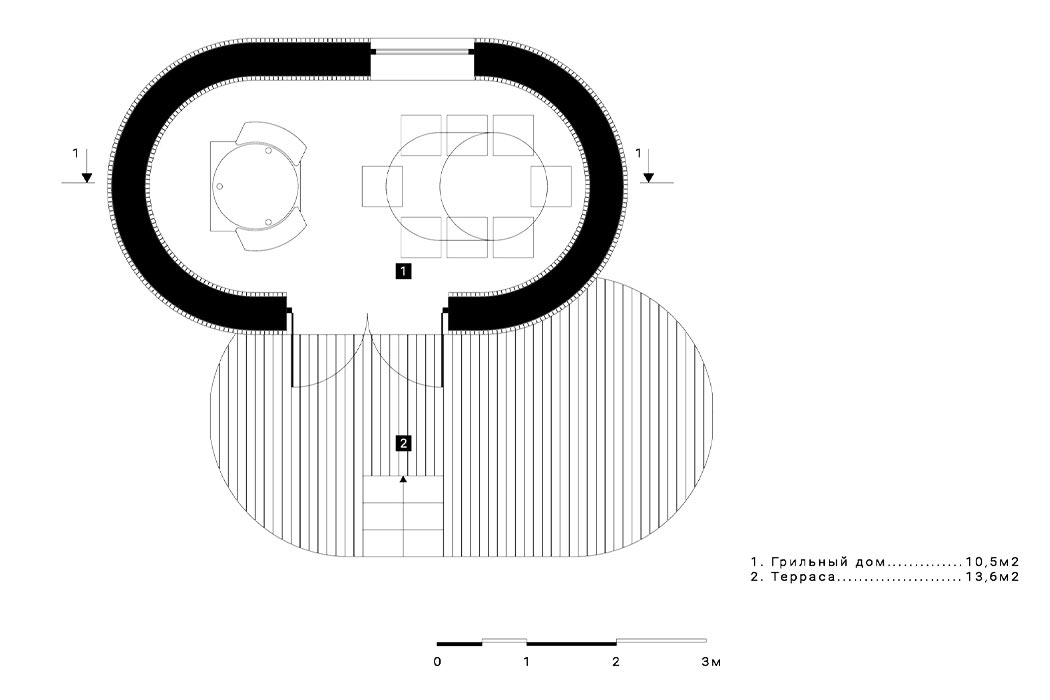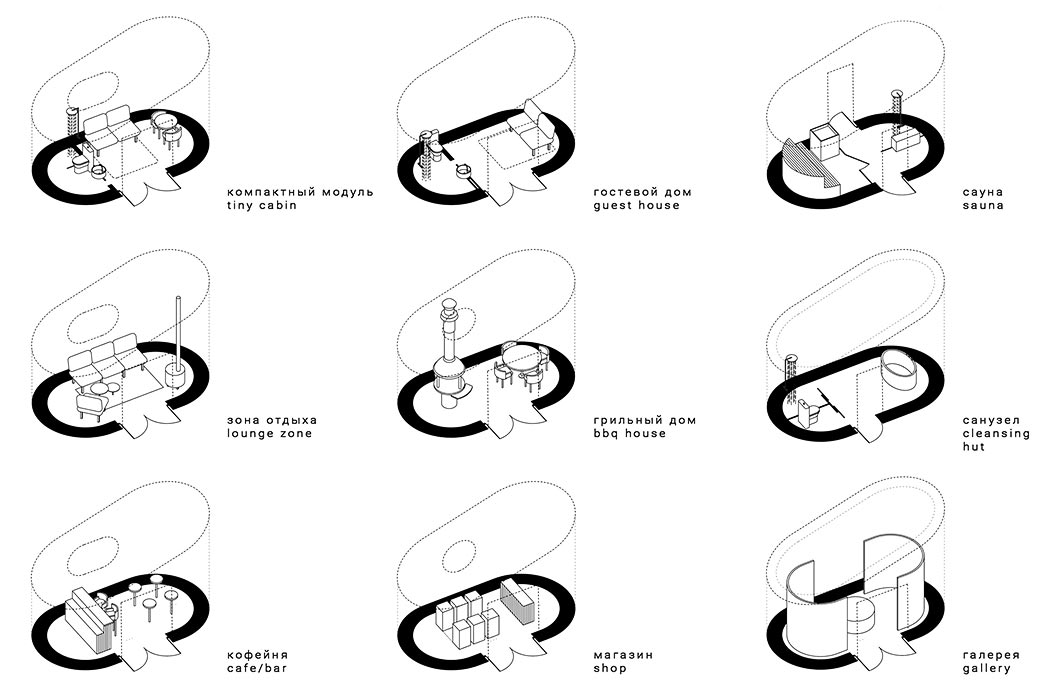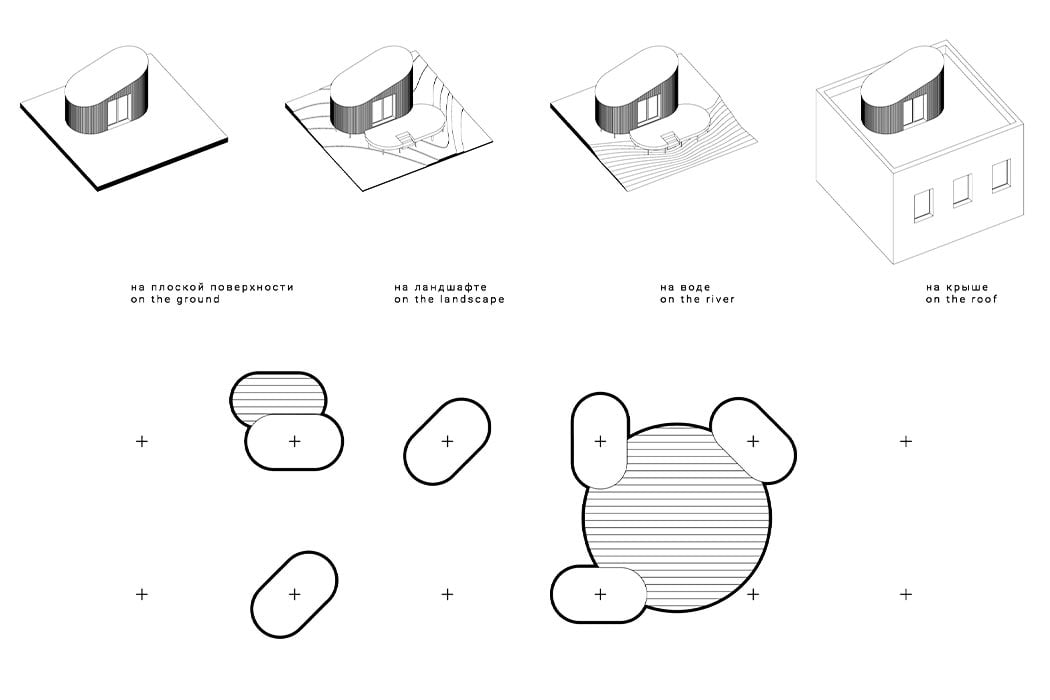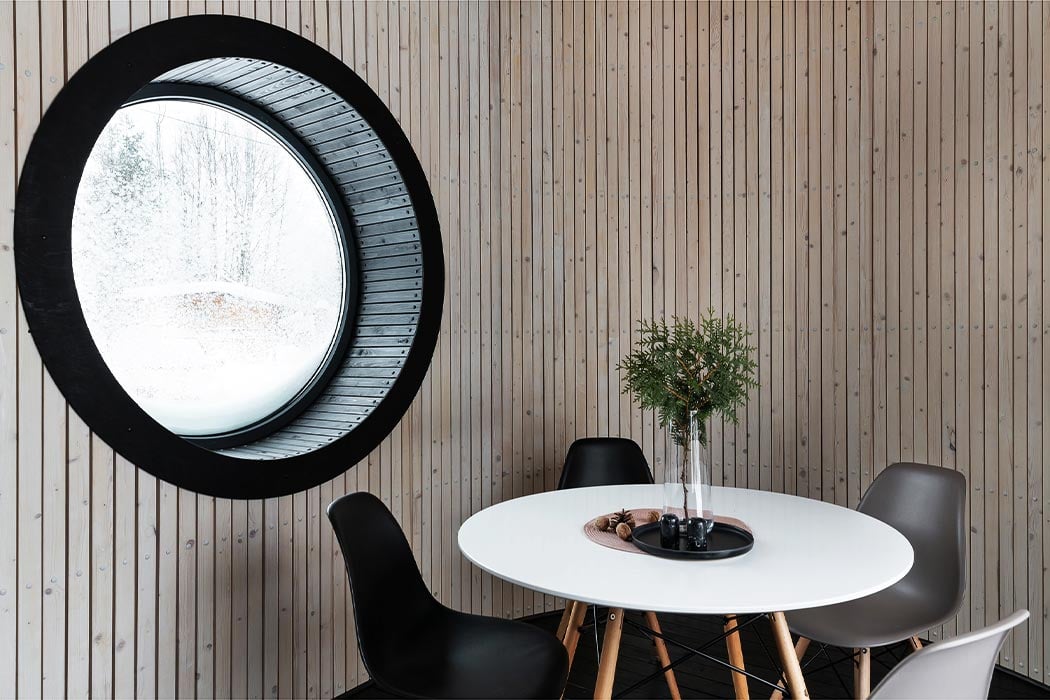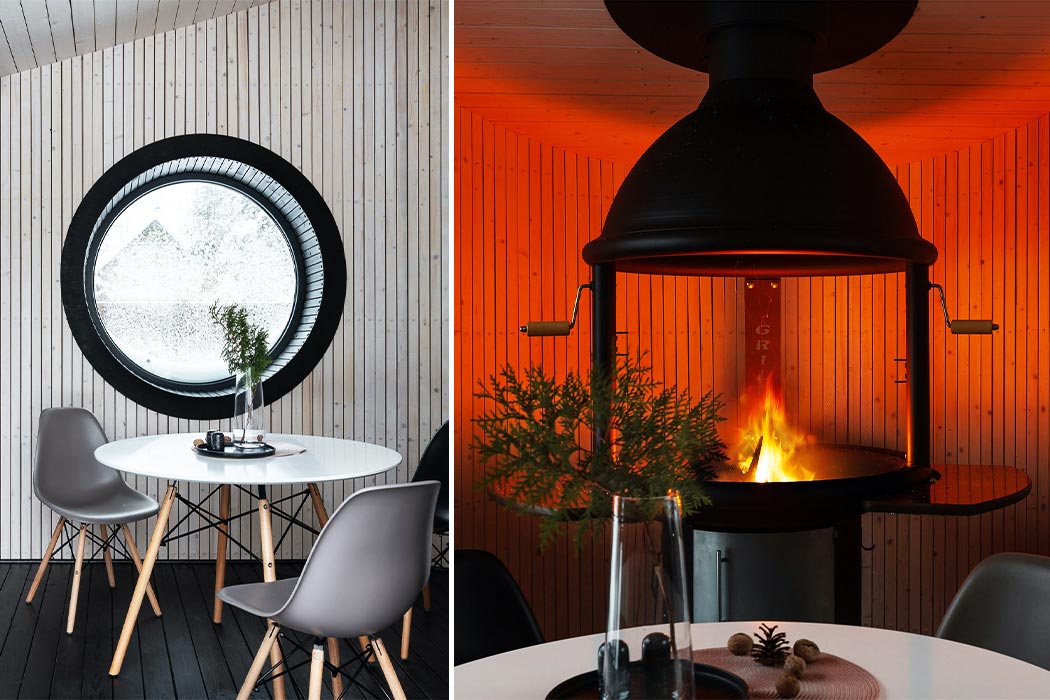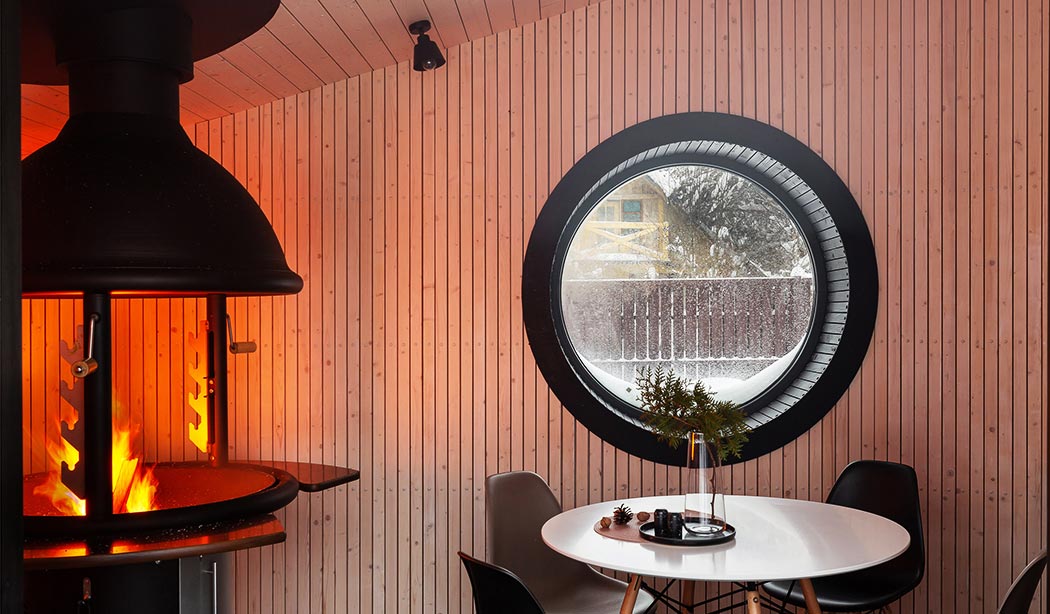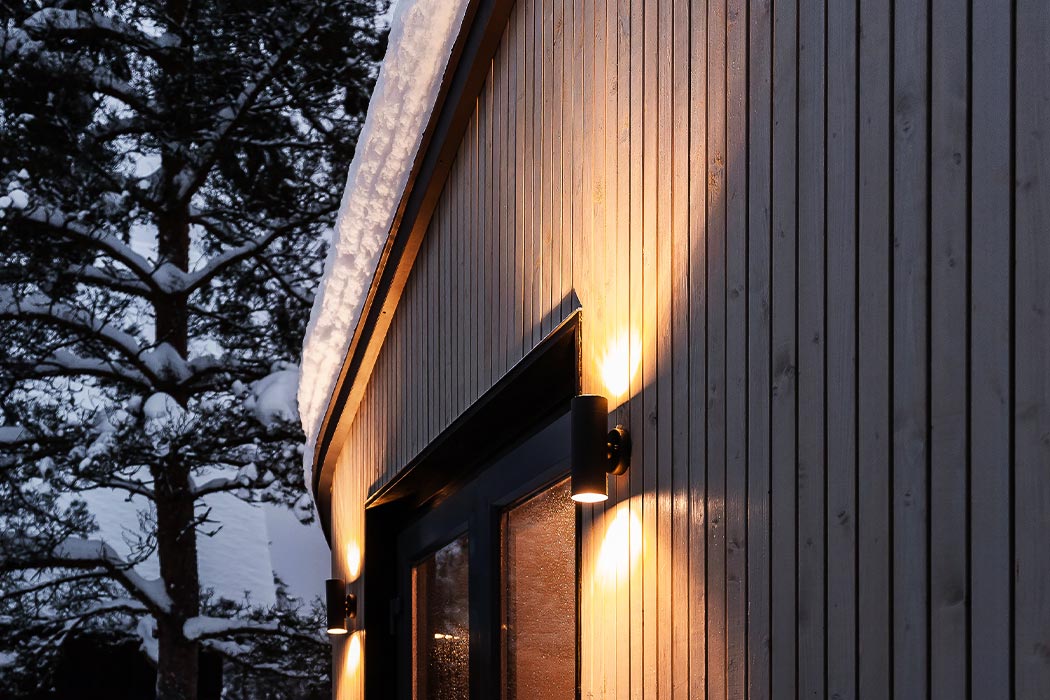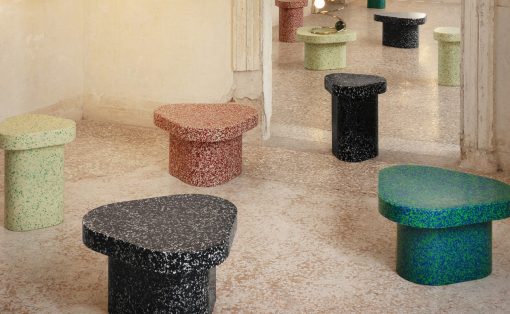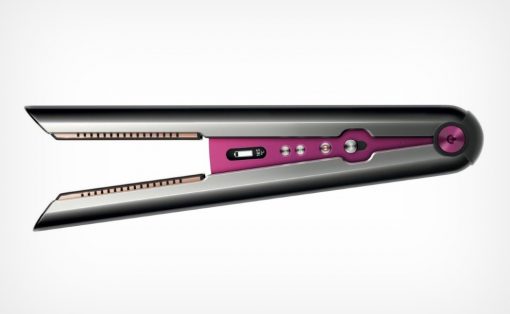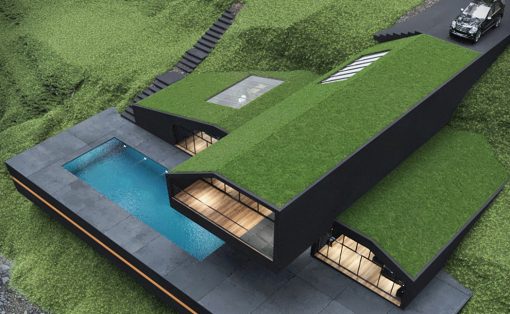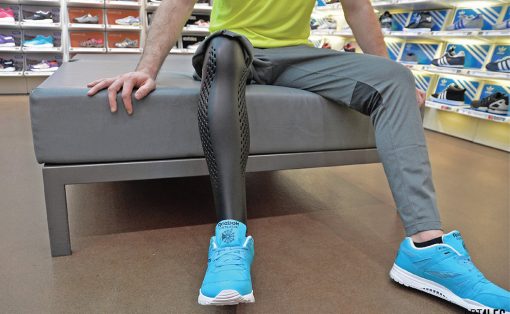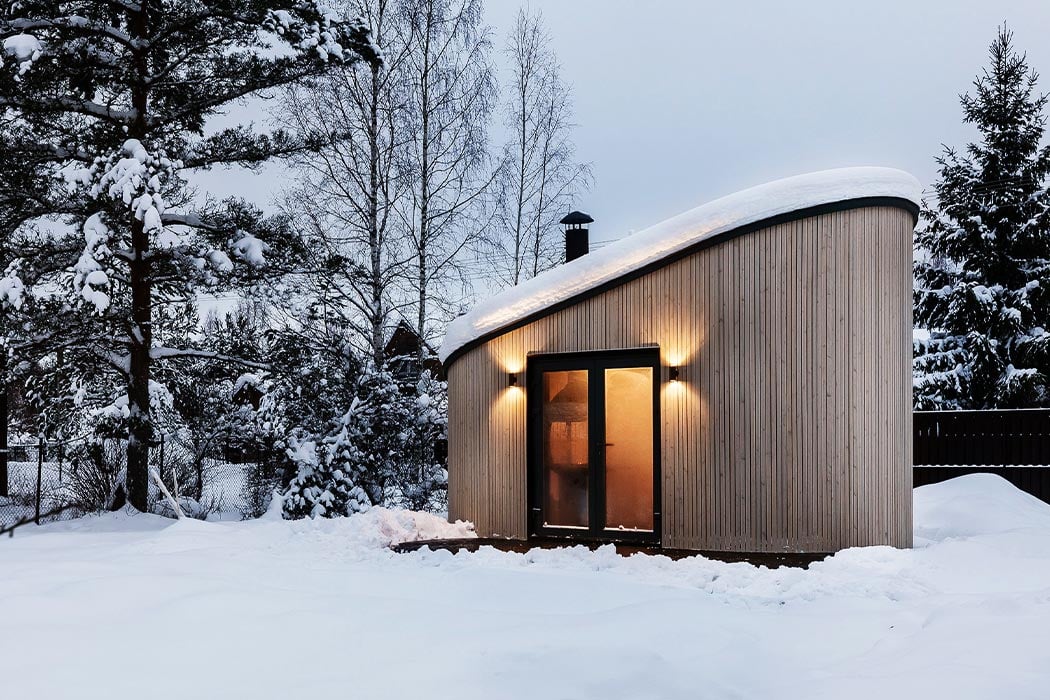
As I am writing this, it is almost December and I am already turning up the volume on ‘I am dreaming of a white Christmas!” while looking at this sustainable Scandinavian grill house blanketed in snow! FLEXSE is a prefabricated micro-dwelling solution aka tiny house designed to adapt to ALL seasons, so even if winter wonderland is not your thing, this cabin will certainly be.
The cozy modern structure is constructed entirely from 100% recyclable materials and can be assembled in parts on-site or positioned on foundations, allowing it to be set up in remote areas, the countryside, or even on water. Since the construction industry is responsible for more greenhouse gas emissions than aviation (12% vs 2% – can you believe it?), it is wonderful to see an all-season eco-friendly house. The first prototype was a small BBQ shack intended for cooking and then the team made sure it could be tailored for different purposes too – like a sauna, a guest house, a home office, and more. This eventually led to FLEXE being a complete tiny house. One of its most distinct details is the circular window which almost makes the house look like it has the most elegant monocle with a periscope-like view.
The angled roof minimises the accumulation of snow and rain while giving it a visual aesthetic that will remind you of the houses we drew as children with chimneys. It features an elegant wood-stripped interior and exterior with an open grill that warms the space. The ellipse-shaped cabin is so compact and yet maximizes the usable area by maintaining a minimal footprint and using design to make it functional for different scenarios. FLEXSE can setup on different foundations – concrete slabs, metal piers, and more, allowing it to be an accessible tiny home for remote areas, even on water! I imagine FLEXSE to be most popular as a getaway cabin or a remote office pod.
“We are looking at material reuse as one of the areas to further reduce the city’s carbon footprint. It shouldn’t be a tail-pipe problem of how to manage landfills but a design problem of how to make our structure a material bank where the material doesn’t only retain value but also you can sell them in the future giving it a longer, more purposeful life while reducing waste” says Eden Brukman, Architect and Senior Green Building Coordinator for the City of San Francisco on their efforts to find climate-friendly architectural solutions. Sustainable architecture is booming as we explore green building solutions and the goal is for them to be scalable so there is a large impact.
Designer: SA Lab
